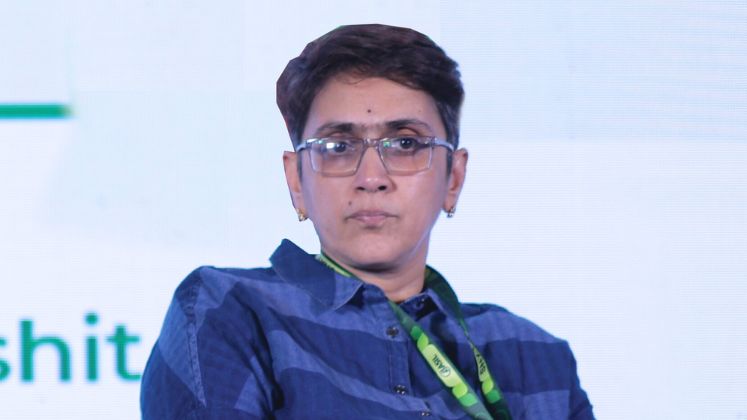That’s the stark warning from experts as India races to draft a sustainability framework to keep its textile sector globally competitive. The Ministry of Textiles is developing this framework and consulting with the industry to ensure it includes clear, actionable steps that benefit businesses. Here’s what leaders shared with AR about their must-haves for a truly effective framework:
Sanjana Swaroop, CEO and Founder, EcoDhaga

The Government already has some exciting sustainability policies in the works and I’m curious to see how they will unfold over a period of time. For example, the circular economy cell is a great step forward. The Draft National Resource Efficiency Policy 2019, also aims to shift consumer behaviour, which would benefit circular businesses. Now, we’re all waiting for the Government to move from policy to implementation, especially by introducing penalties, fines and deterrents to encourage compliance. Whether it’s regulating greenwashing, enforcing Extended Producer Responsibility (EPR) in textiles or setting up a circular economy cell, the Government needs to be proactive.
Kanchan Sharma, Co-Founder and Managing Director, Ahmev

An effective sustainability framework must prioritise transparency in business components such as raw materials, supply chain, production and pricing, providing a clear picture of how a product is created and reaches the end user. Pricing must also be fair, detailing each stakeholder’s share so consumers know exactly what they’re paying for and whether it offers value for money.
Akhil Sivanandan, CEO, Green Story

To drive real change, we need policies that empower industry training on sustainability—going beyond basic ESG measures to focus on supply chain and product lifecycle assessments for real impact. Access to funding frameworks is key, enabling private and public bodies to back decarbonisation efforts for businesses. Let’s be clear: without the MSME sector, the Government’s sustainability targets would be out of reach. Market-based incentives like easier access to export markets for companies meeting sustainability standards and impactful long-term loans and grants are also must-haves. Involving the microfinance sector will be a game-changer, helping MSMEs execute smallscale but meaningful projects.
Kanta Dutta, Senior Business Development Manager, Unique Tags Pvt. Ltd.

To ensure traceability, it’s crucial to introduce tools that track the journey from raw materials to finished products. This could include an electronic platform where stakeholders, from suppliers to manufacturers to retailers, input relevant data like sustainability certifications and environmental impact reports. Blockchain technology would ensure data integrity and prevent false claims. Additionally, a centralised public database could allow both consumers and businesses to access real-time sustainability credentials. Regular audits and third party certifications should be implemented to verify sustainability claims across the supply chain.
Sartaj Singh Mehta, Senior Director Design and Product, Pepe Jeans London

First, tax benefits should be linked to tangible outcomes, such as price reductions for buyers. For example, offering green field capital investments, similar to the export-promoting zones in the past, could create incentives for sustainable practices. Additionally, encouraging small players who prioritise sustainability could be a game-changer. We could support them through export incentives, GST reductions and easy loans to help them procure sustainable materials.
Shriyans Bhandari, Co-Founder and CEO, Greensole

The Government can encourage sustainability by reducing GST for products made from ecofriendly materials. For example, the current GST on footwear is 18 per cent, but if a product is made with 40 per cent sustainable materials, the GST could be lowered to 5 per cent. This would make sustainable products more affordable for consumers. Another idea is to start a carbon credit trading system, like The European Union Emissions Trading System (EU ETS). If a company pollutes, it must buy credits from a company that’s doing well in sustainability, creating a balance. While this approach didn’t fully take off in the EU, it could be a great initiative for India to try.
Shobha Raghavan, CEO and Director, Saahas Zero Waste

Textile waste collection needs to be integrated with municipal solid waste systems. Even though it’s not a daily occurrence, we could schedule pickups weekly or monthly. The Government should also set up Textile Recovery Facilities (TRFs) alongside existing Material Recovery Facilities (MRFs) to sort textile waste properly. Sorting is key to resource recovery. Right now, recycling focuses on post-industrial waste, ignoring post-consumer waste, which must also be included in recycling systems. Currently, only two clusters, Panipat and Tirupur, handle some post-consumer textile waste. Local recycling clusters should be developed to reduce transportation costs, emissions and better align with local materials and labour skills. Brands also need to be brought under an Extended Producer Responsibility (EPR) framework.
Chemical recycling is the only viable solution for mixed textiles, but it is expensive. So, Government support is essential.
Jasveen Kaur, Senior Director Merchandising, Newtimes Group

One of the segments I would like to emphasise more is digital enhancement, specifically AI to prevent greenwashing and creating transparency supply chains. We can take a cue from the partnership between the European Space Agency (ESA), Global Organic Textile Standard (GOTS) and AI Company Marple for remote satellite monitoring of organic cotton cultivation systems.
Priya Bawa, CEO and Founder, Artisans Nest

There should be more connectors between artisans and entrepreneurs working with organic materials like hemp and Tencel. It’s often hard for businesses to find the right people to collaborate with, so having local groups connecting artisans, farmers and entrepreneurs would be beneficial. We also need more awareness, starting from childhood education
Harshit Kakkar, Founder, HSN ECOTEX

The Government can introduce waste diversion targets, encouraging recyclers to divert a set percentage of post-consumer textile waste from landfills within three years by incentivising recycling infrastructure and processes. Supporting carbon emission reduction and energy efficiency by promoting a 15 per cent shift to renewable energy sources like solar or wind over five years, with subsidies or tax benefits for upgrading to energy-efficient machinery, can significantly reduce the industry’s carbon footprint. Financial incentives, such as 10 per cent subsidies for companies processing over 1,200 tonnes of textile waste annually into usable fibres or yarns and grants covering 30 per cent of costs for adopting advanced recycling technologies like automated sorting or waterless processing, can further boost recycling rates. Capacity building programs targeting 500 small-scale textile recyclers annually, supported by training and certifications, would empower smaller players to adopt best practices.
With inputs from (Raktima Gupta)







